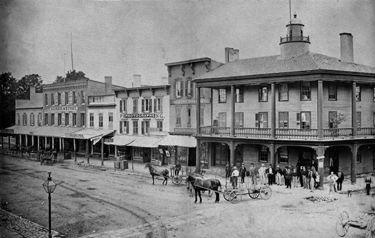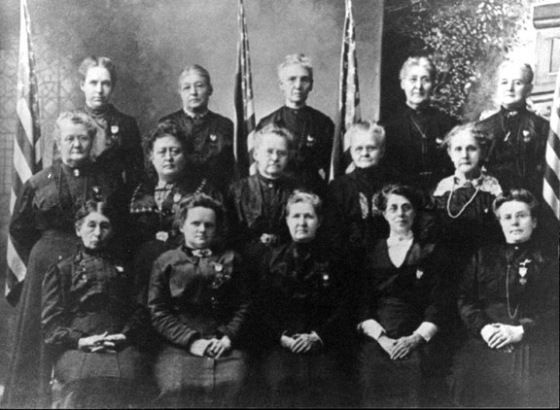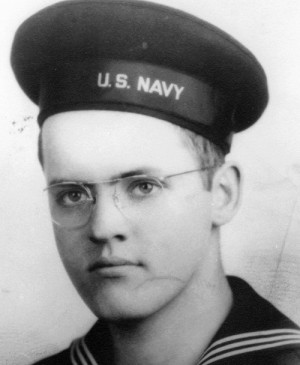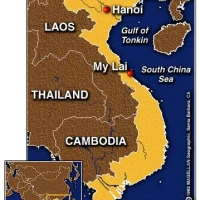Celebrated annually on the last Monday in May, Memorial Day is a United States federal holiday where the men and women who gave the ultimate sacrifice while serving in the armed forces are remembered. It was formerly known as Decoration Day and originated after the American Civil War in honor of the Union and Confederate soldiers who died in the war.

Originally called Decoration Day, the holiday was created to commemorate the roughly 625,000 Union and Confederate soldiers who died during the Civil War.
This honor was extended to all Americans who died while in military service. It is thought of as the unofficial start of the summer vacation season an idea that I think blurs the real reason for the holiday but that seems to happened with most holidays.

Decoration Day Parade (detail), Brownsville, Texas,
Robert Runyon, photographer, 1916.
The South Texas Border, 1900-1920
Many people visit cemeteries and memorials, particularly to honor those who have died in military service. Many volunteers place an American flag on each grave in national cemeteries. I visited my father’s grave this weekend and placed a flag at his marker. Although it is for remembrance of those that died in service, I like to think of veterans in general for Memorial Day even though we also have Veterans Day in November. Although my father is no longer living and he served in the Navy during World War 2, he did not die in that service. I am writing his war story in my blog USS Hornet (CV-12), A Father’s Untold War Story.
History of the holiday
The practice of decorating soldiers’ graves with flowers is an ancient custom. Soldiers’ graves were decorated in the U.S. before and during the American Civil War. A claim was made in 1906 that the first Civil War soldier’s grave ever decorated was in Warrenton, Virginia, on June 3, 1861, implying the first Memorial Day occurred there. Though not for Union soldiers, there is authentic documentation that women in Savannah, Georgia, decorated Confederate soldiers’ graves in 1862.

Image from the “Gettysburg Compiler,” May 30, 1899. Click image for larger/clearer image. MEMORIAL DAY.
In 1863, the cemetery dedication at Gettysburg, Pennsylvania, was a ceremony of commemoration at the graves of dead soldiers.

The dedication ceremony for the National Cemetery at Gettysburg Battlefield was held in November 1863. Abraham Lincoln, hatless, is seated left of center.
Local historians in Boalsburg, Pennsylvania, claim that ladies there decorated soldiers’ graves on July 4, 1864. As a result, Boalsburg promotes itself as the birthplace of Memorial Day.

In Boalsburg, Pennsylvania each year, locals and tourists come together to participate in the traditional Memorial Day celebration.
Following President Abraham Lincoln’s assassination in April 1865, there were a variety of events of commemoration. The sheer number of soldiers of both sides who died in the Civil War, more than 600,000, meant that burial and memorializing took on new cultural significance. Under the leadership of women during the war, an increasingly formal practice of decorating graves had taken shape. In 1865, the federal government began creating national military cemeteries for the Union war dead.

On May 1, 1865 in Charleston, South Carolina freed slaves honored 257 Union soldier war dead. The soldiers died at a prison camp and were buried in a mass grave. The freed slaves reburied the soldiers with honor. It took them two weeks to properly bury them. –
The first widely publicized observance of a Memorial Day-type observance after the Civil War was in Charleston, South Carolina, on May 1, 1865. During the war, Union soldiers who were prisoners of war had been held at the Charleston Race Course; at least 257 Union prisoners died there and were hastily buried in unmarked graves. Together with teachers and missionaries, black residents of Charleston organized a May Day ceremony in 1865, which was covered by the New York Tribune and other national papers. The freedmen cleaned up and landscaped the burial ground, building an enclosure and an arch labeled, “Martyrs of the Race Course.” Nearly ten thousand people, mostly freedmen, gathered on May 1 to commemorate the war dead. Involved were about 3,000 school children newly enrolled in freedmen’s schools, mutual aid societies, Union troops, black ministers, and white northern missionaries. Most brought flowers to lay on the burial field. Today the site is used as Hampton Park. Years later, the celebration would come to be called the “First Decoration Day” in the North.
David W. Blight described the day:
“This was the first Memorial Day. African Americans invented Memorial Day in Charleston, South Carolina. What you have there is black Americans recently freed from slavery announcing to the world with their flowers, their feet, and their songs what the war had been about. What they basically were creating was the Independence Day of a Second American Revolution.”
However, Blight stated he “has no evidence” that this event in Charleston inspired the establishment of Memorial Day across the country.
On May 26, 1966, President Johnson signed a presidential proclamation naming Waterloo, New York, as the birthplace of Memorial Day. Earlier, the 89th Congress adopted House Concurrent Resolution 587, which officially recognized that the patriotic tradition of observing Memorial Day began one hundred years prior in Waterloo, New York. According to legend, in the summer of 1865 a local druggist Henry Welles, while talking to friends, suggested that it might be good to remember those soldiers who did not make it home from the Civil War.
Not much came of it until he mentioned it to General John B. Murray, a Civil War hero, who gathered support from other surviving veterans.
On May 5, 1866, they marched to the three local cemeteries and decorated the graves of fallen soldiers. It is believed that Murray, who knew General Logan, told Logan about the observance and that led to Logan issuing Logan’s Order in 1868 calling for a national observance.
In the North
Copying an earlier holiday that had been established in the Southern states, on May 5, 1868, in his capacity as commander-in-chief of the Grand Army of the Republic, the veterans’ organization for Union Civil War veterans, General John A. Logan issued a proclamation calling for “Decoration Day” to be observed annually and nationwide. It was observed for the first time that year on Saturday May 30; the date was chosen because it was not the anniversary of any particular battle. According to the White House, the May 30 date was chosen as the optimal date for flowers to be in bloom.
Memorial events were held in 183 cemeteries in 27 states in 1868, and 336 in 1869. The northern states quickly adopted the holiday. Michigan made “Decoration Day” an official state holiday in 1871 and by 1890, every northern state had followed suit.
The ceremonies were sponsored by the Women’s Relief Corps, the women’s auxiliary of the Grand Army of the Republic (GAR), which had 100,000 members.
By 1870, the remains of nearly 300,000 Union dead had been reinterred in 73 national cemeteries, located near major battlefields and thus mainly in the South.
The most famous are Gettysburg National Cemetery in Pennsylvania and Arlington National Cemetery, near Washington, D.C.
Memorial Day speeches became an occasion for veterans, politicians, and ministers to commemorate the War and, at first, to rehash the “atrocities” of the enemy. They mixed religion and celebratory nationalism and provided a means for the people to make sense of their history in terms of sacrifice for a better nation. People of all religious beliefs joined together and the point was often made that the German and Irish soldiers had become true Americans in the “baptism of blood” on the battlefield. By the end of the 1870s, much of the war-time rancor was gone, and the speeches usually praised the brave soldiers, both Blue and Gray.
In the South
Evidence exists that shows General Logan had adopted and adapted for the North the annual Confederate Memorial Day custom that had been in practice in the South since 1866. The U.S. National Park Service attributes the beginning to the ladies of Columbus, Georgia.
The separate tradition of Memorial Day observance which had emerged earlier in the South was linked to the Lost Cause and served as the prototype for the national day of memory. Historians acknowledge the Ladies Memorial Association played a key role in its development.
Various dates ranging from April 25 to mid-June were adopted in different Southern states. Across the South, associations were founded, many by women, to establish and care for permanent cemeteries for the Confederate dead, organize commemorative ceremonies, and sponsor appropriate monuments as a permanent way of remembering the Confederate cause and sacrifice. The most important was the United Daughters of the Confederacy, which grew from 17,000 members in 1900 to nearly 100,000 women by World War I. They were “strikingly successful at raising money to build Confederate monuments, lobbying legislatures and Congress for the reburial of Confederate dead, and working to shape the content of history textbooks.”
On April 25, 1866, women in Columbus, Mississippi laid flowers on the graves of both the Union and Confederate dead in the city’s cemetery. The early Confederate Memorial Day celebrations were simple, somber occasions for veterans and their families to honor the dead and tend to local cemeteries. By 1890, there was a shift from the emphasis on honoring specific soldiers to a public commemoration of the lost Confederate cause. Changes in the ceremony’s hymns and speeches reflect an evolution of the ritual into a symbol of cultural renewal and conservatism in the South. By 1913, the theme of American nationalism shared equal time with the Lost Cause.
Name and date
Memorial Day endures as a holiday which most businesses observe because it marks the unofficial beginning of summer. The Veterans of Foreign Wars (VFW) and Sons of Union Veterans of the Civil War (SUVCW) advocate returning to the original date, although the significance of the date is tenuous. The VFW stated in a 2002 Memorial Day Address:
Changing the date merely to create three-day weekends has undermined the very meaning of the day. No doubt, this has contributed a lot to the general public’s nonchalant observance of Memorial Day.
Starting in 1987 Hawaii’s Senator Daniel Inouye, a World War II veteran, introduced a measure to return Memorial Day to its traditional date. Inouye continued introducing the resolution until his death in 2012.
I tend to agree with him. Don’t get me wrong, I like days off from work like the next person and a three-day weekend is great but on Tuesday when your co-workers ask about your Memorial Day, they want to know about the barbeque or the trip to the beach, not about you putting flags on graves or attending a parade.
















 Check out my other blog
Check out my other blog I'M PUBLISHED
I'M PUBLISHED I'm Published Again
I'm Published Again









This was a very good read and so true about 3 day weekends. We have Victoria day which is for the Queen so it does not have the same resonance and deepness that memorial day has for you. We have Remembrance day which I always honour in my own special way. The sad thing is that, aside from government offices, banks and the LCBO most places are open. Less younger people wear the poppy and that is a shame. I am wanting that they make Remembrance day a true holiday and that it always remains on the 11th. Yours should have stayed on the date because now even less people pay respects the way they should
LikeLike
Wow, I’ve driven through Boalsburg many times. It always seems like a nice, but fairly nondescript little town, on the outskirts of State College. It’s amazing that Memorial Day began there 150 years ago.
LikeLike
It seems like so many areas are trying to lay claim to being the first.
LikeLike
Very interesting to read the history of Memorial Day.
LikeLike
Thank you
LikeLike